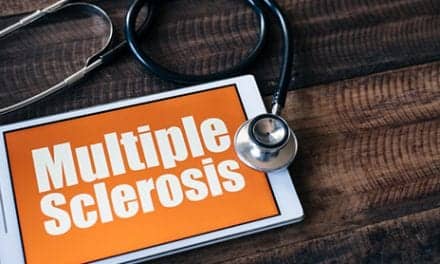Females afflicted by the autoimmune condition multiple sclerosis experience temporary improvement during pregnancy. Scientists have now detected some of the advantageous alterations naturally occurring in the immune system throughout gestation. The results, published in the Journal of Neuroinflammation, could pave the path to novel therapies.
Gestation presents a unique immunological state. The immune system functions as our shield against external agents. Yet, despite the fact that half of an unborn child’s genetic makeup originates from the father, the mother’s immune system does not reject it. The remarkable success of this delicate equilibrium can be attributed, in part, to the mother’s immune system adapting to enhance tolerance during pregnancy.
In the case of multiple sclerosis (MS), the immune system targets the fatty protective layer surrounding nerve fibers, impairing nerve functionality. Inflammation occurs in the nerves, potentially resulting in damage. Despite the existence of novel and improved treatment choices, the majority of MS patients experience progressive deterioration as time passes.
Scientists hypothesize that the temporary suppression of the immune response may elucidate the improvement experienced by women with MS during pregnancy. In the final trimester, relapses, or symptomatic episodes, diminish by approximately 70%. Additionally, certain other autoimmune disorders like rheumatoid arthritis exhibit temporary amelioration during gestation. However, the underlying cause for this phenomenon has remained unclear. Consequently, the researchers involved in this study aimed to investigate the specific mechanisms that might play a crucial role in symptom reduction during pregnancy. Their objective is to pave the way for future treatment strategies that can replicate the same beneficial effects in MS and potentially in other similar diseases as well.
The researchers focused their attention on T cells, which hold significant importance in the immune system. T cells are not only crucial in the progression of MS but also play a vital role during pregnancy. To investigate further, the study involved a comparison between 11 women diagnosed with MS and 7 healthy women. Blood samples were collected from both groups before, during, and after pregnancy for analysis.
In order to comprehend the immune cell dynamics, the researchers identified the genes expressed in the T cells at different time points during pregnancy. They also examined the alterations in gene regulation, specifically focusing on epigenetic changes, which govern the activation and deactivation of genes. Within their study, the researchers delved deeper into a particular regulatory mechanism known as DNA methylation.
According to Sandra Hellberg, one of the researchers involved in the study and an assistant professor at the Department of Biomedical and Clinical Sciences at Linköping University, the most remarkable finding was the lack of substantial differences between the groups during pregnancy. It appears that the immune system of a pregnant woman with MS closely resembles that of a healthy pregnant woman. This observation suggests that the immune response in pregnant women with MS undergoes significant changes, aligning it with the immunological profile of healthy pregnancies.
The researchers discovered interconnected gene networks that are influenced during pregnancy, and these genes are closely associated with both the disease itself and crucial processes within the immune system. Their study highlights the substantial relevance of these genes in understanding the disease pathology and the immune system’s intricate workings.
Hellberg explains that the alterations observed in T cells correspond to the reduction in relapse frequency, indicating a connection between the two. The most significant changes occur during the final trimester of pregnancy, coinciding with the period when women with MS experience the most significant improvement. However, these changes are reversed after pregnancy, coinciding with a temporary increase in disease activity. It is essential to note that disease activity eventually returns to its pre-pregnancy state.
The network of genes influenced during pregnancy encompasses genes regulated by pregnancy hormones, particularly progesterone. As part of their ongoing research, the scientists are conducting laboratory experiments to evaluate the effects of various hormones and determine if they can replicate the observed effects. This investigation aims to explore the potential of these hormones as a potential component of future treatment strategies.
This research project is the outcome of a longstanding collaboration between medical and bioinformatics researchers. A crucial aspect of the study involved comprehending the vast amount of data through the application of network analysis. The development of network analysis techniques, including the work of research groups led by Mika Gustafsson at Linköping University, has been instrumental in this process. Network analysis serves as a valuable tool for identifying genes that exhibit extensive interactions with the genes of interest to the researchers. Often, it reveals that other genes within the network are regulated abnormally, indirectly impacting critical processes in the disease under investigation.
The knowledge gained from such insights can be harnessed to discover alternative medications and identify new biomarkers that aid in distinguishing subgroups within a disease. This strategy has proven successful in analyzing various conditions, including allergies and multiple sclerosis, according to Mika Gustafsson, a professor of Bioinformatics. To facilitate further research, Gustafsson is making the analysis accessible to other researchers through a recently established company. This initiative aims to support the broader scientific community in utilizing these analytical tools effectively.
The study is a sub-study of the GraMS (Pregnancy and MS) study and involved a collaborative effort among several institutions, including Linköping University, the Karolinska University Hospital in Solna, Linköping University Hospital, Länssjukhuset Ryhov in Jönköping, and Region Kalmar. The research received funding from various sources, including the Swedish Foundation for Strategic Research, the Swedish Research Council, NEURO Sweden, the Swedish Foundation for MS Research, Region Östergötland, Linköping University, and other contributing organizations.





